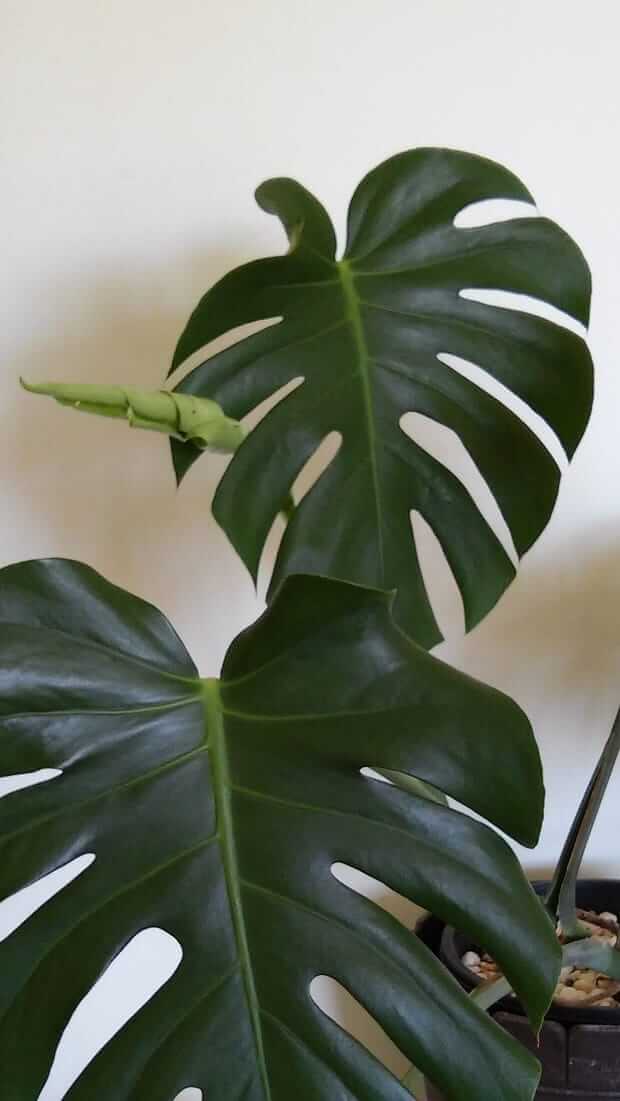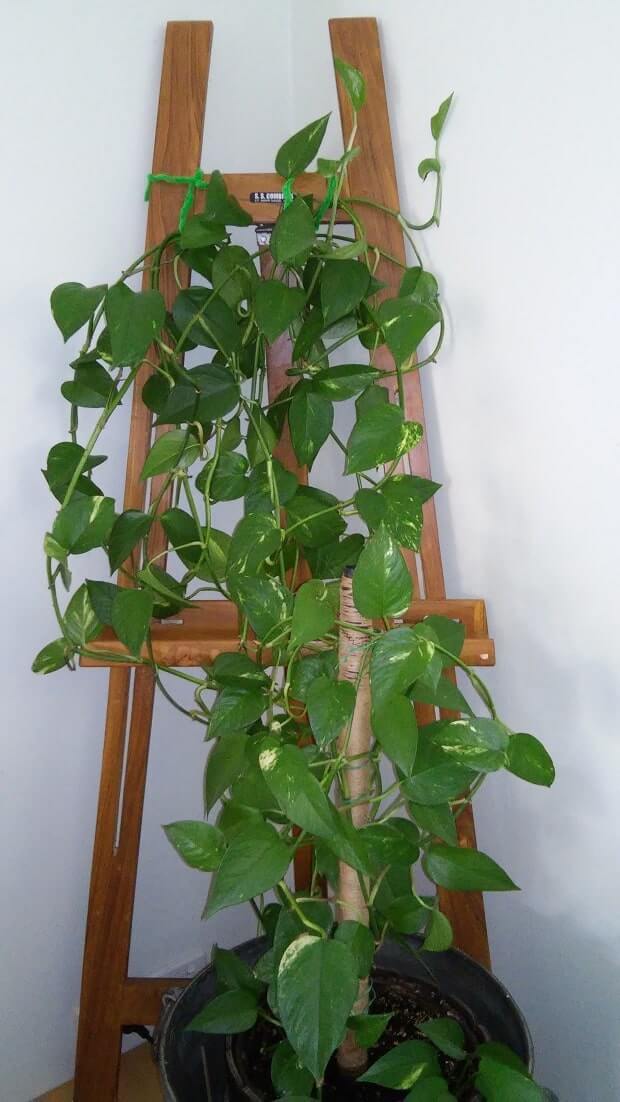The monster on the wall greets me every time I step into my house. It’s a Monstera to be exact, commonly known as the Swiss Cheese plant. Its leaves seem to stretch out cheerfully, hands raised in warm greeting, every time I return home. It lends an ornamental ambience to the interior, for it is indeed a handsome plant, if somewhat expansive, with an elegantly flowing outline.
This green giant came to me four years ago in a very bad shape It looked rather pathetic at first sight, not at all imposing as its name suggested, as it had only four drooping leaves all tinged with brown at the edges. It stood in its pot on the pavement at the local community shopping centre, silently begging for care and attention.
Even at the throwaway price of ten dollars, there seemed to be no takers. I decided to rescue it and took it home. It acquired a new pot in no time and was given pride of place in our dining room. Since then my green foundling has dug in well in its homely surroundings. It has grown phenomenally, also on me. Though the rate of its natural growth is rather slow – it adds one leaf every five months, I have observed this single-leaf foliation process with great fascination every time.
The delicate organic apostrophe slowly detaches itself from the stem of its nearest kin, and uncurls gradually from day-to-day until it proudly presents itself as a glossy and stately fan-shaped leaf.

Today my Monstera plant has a majestic presence that lends grace to our dining room. It compels admiration from discerning visitors and commands my unwavering devotion. Surely you have heard of Prince Charles talking to his plants as a carer or mate – the underlying feeling is the same! Plants can be wonderful companions living with you indoors, working well beyond their merely decorative aspect. These silent and motionless entities seem to influence our emotions subtly, as researchers have found.
They impart a sense of cheerfulness and vitality to enclosed spaces such as in offices and homes. They make a person feel relaxed and happy. Indeed, if you happen to be feeling an emptiness in your nest, and are unable to keep a pet, having indoor plants may be a good way of filling the gap.
As we all know, the most important reason for nurturing indoor plants is the fact that they offer tremendous health benefits. Indoor air quality is an increasing health concern in developed countries where people may be spending most of their time indoors due to work or lifestyle.
“The air inside is always more stale. We use a whole lot of materials derived from fossil fuels that contribute to pollution, like furniture, paint and computers. There’s also more carbon dioxide as we all breathe together,” says Professor Margaret Burchett, a researcher on the subject at the University of Technology, Sydney. Indoor plants help reduce air pollution by absorbing carbon dioxide and other harmful gases and releasing oxygen.

Studies have found that indoor plants provide other health benefits as well, notably reduction in stress and increase in mental concentration. They calm and soothe, indeed they impart a sense of peacefulness.
Plants in a working environment help increase efficiency and creativity. Moreover the foliage helps to balance air humidity levels, which is helpful against the common cold, sore throat and some fungal infections.
As a person with reasonable passion, but no outstanding aptitude in horticulture, I always root for common and hardy plants. Apart from the ubiquitous Epipremnum Scindapsus Aureum that is so familiar to us as the Money Plant, there is a wide selection of plants to choose from, that grow well indoors and do not need strenuous care.

There are plenty of guidelines to be found on all aspects of the subject on the internet. The Monstera plant is an obviously attractive option. Some of the other plants that have found permanent residency and prospered under my roof include the Schefflera Actinophylla or Umbrella/Octopus plant, Chlorophytum comosum or Spider Lily plant, Yucca Elephantipes or Spineless Yucca/False Palm, Ficus Benjaminaor Weeping Fig, and Hedera or Common Ivy. These are all good looking and easy to maintain, even for obliging neighbours who step in to take care while we are on holidays.
Having an extensive garden attached to the house does not necessarily preclude the option of keeping indoor plants. Most of us spend the maximum part of our day inside the house and not out in the garden. It makes sense to bring some of the green indoors too. It’s a matter of health and heart after all.
READ ALSO: Simple tips to start composting in your backyard today





